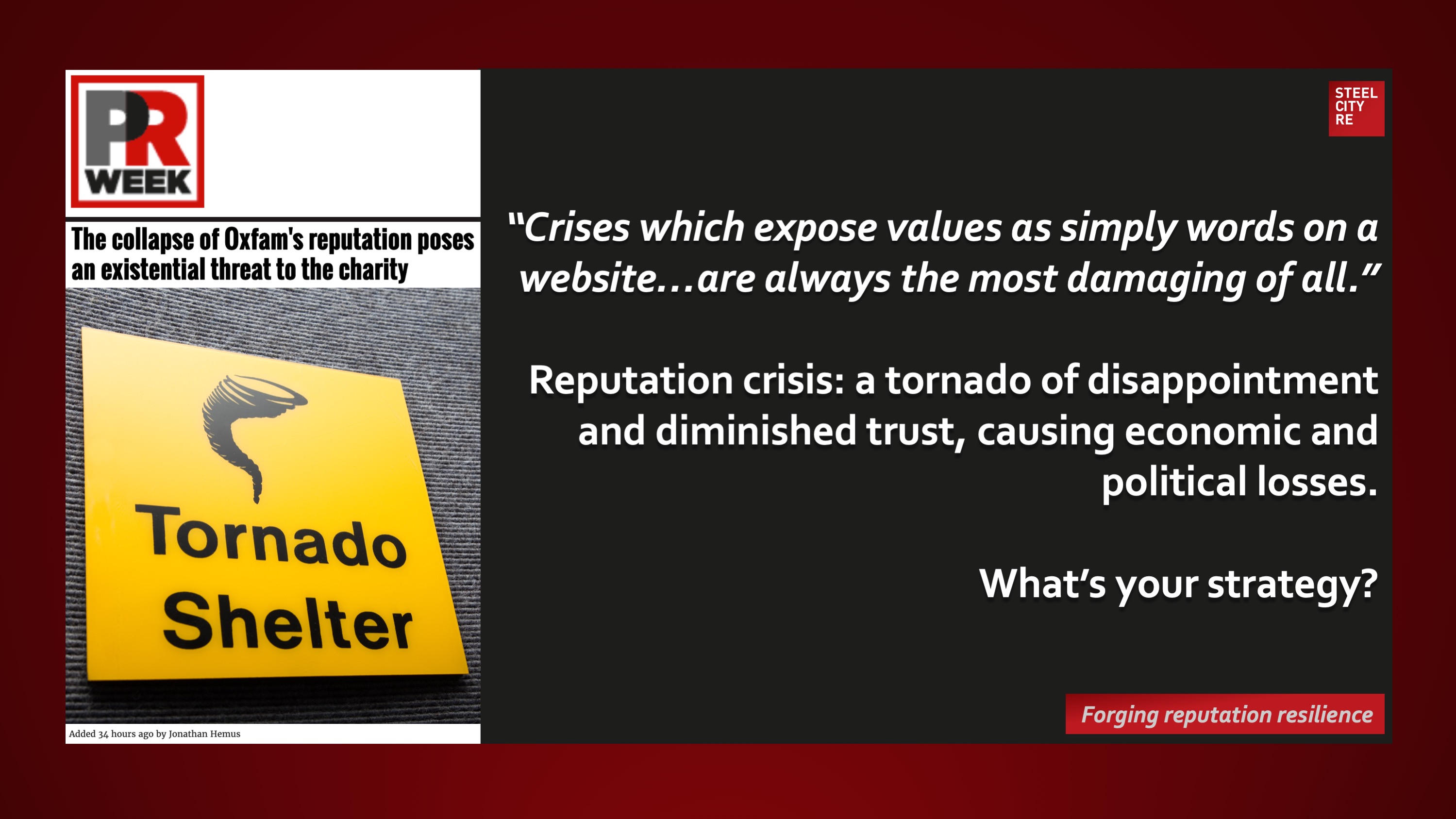“The Charity Commission’s report into allegations of sexual misconduct by Oxfam staff concluded that a key driver for its failure to be sufficiently ‘full and frank’ about the allegations was ‘influenced by a desire to protect Oxfam GB’s reputation’…The scandal impacts … its future viability, as evidenced by the cancellation of direct debits by thousands of its regular donors and the loss of UK government aid…(C)rises stemming from cultural and behavioural issues have a power to pose an existential threat to an organisation, which is rarely the case with an operational crisis such as a major accident or a cyber-incident.”
PR Week
June 17, 2019
“Crises which expose values as simply words on a website…are always the most damaging of all.”
Reputation crisis: a tornado of disappointment and diminished trust, causing economic and political losses.
For a broader view of reputation risk, discover additional articles by Steel City Re here, mentions of Steel City Re here, and comments on newsworthy topics by Steel City Re here. To read an abstracted summary of reputation risk, see below.
Reputations are valuable strategic intangible assets. Threats to these assets⏤ enterprise reputation risks, often mislabeled “brand risks” ⏤ need to be managed, and management needs to be overseen through reputation risk governance lest reputational damage or reputational harm result in long-tailed go-forward losses in economic value and/or political power. Because these intangible risks arise from the interplay of stakeholder expectation, experiences, and media amplification, parametric insurances for intangible asset risks, for reputational value, for reputational harm, and for reputation assurance help mitigate risk by telling a simple, convincing and completely credible story of quality reputation governance to stakeholders. This story telling effect is the expressive power of insurance complementing insurance’s better known instrumental power of indemnification.
Risk management, risk financing in insurance captives, and risk transfer through reputation insurances comprise the constituent elements of a comprehensive solution.
What’s your strategy?

